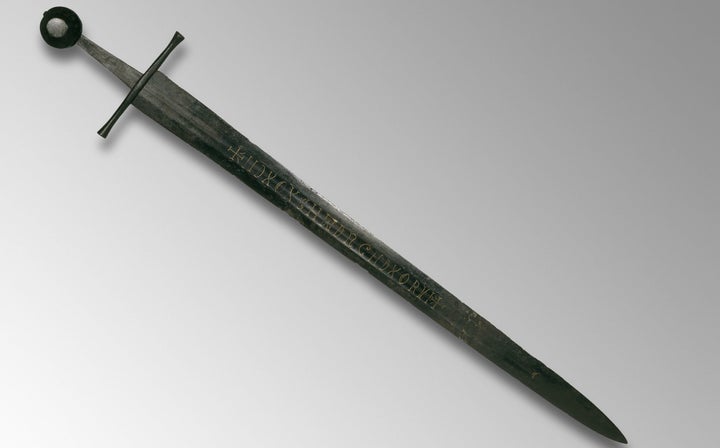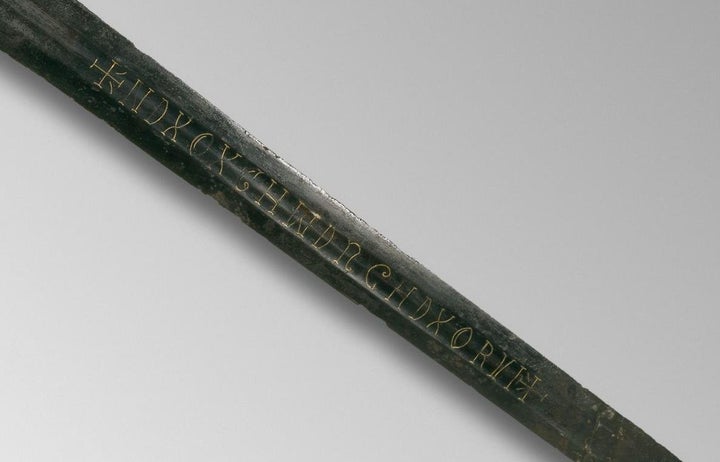
The River Witham Sword and its mysterious inscription.
The British Library is calling on the public to help solve a mystery nearly 800 years in the making: Just what is written on this sword?
The double-edged sword, which is part of an exhibition on the Magna Carta and on loan from the British Museum, weighs 2 pounds 10 ounces and measures 38 inches in length and 6.5 inches across the hilt.
"If struck with sufficient force, it could easily have sliced a man’s head in two," Julian Harrison, the library's curator of early modern manuscripts, wrote in a blog post.
The British Museum said the blade was likely made in Germany in the 13th or early 14th century, but the sword itself is English.
"The sword is part of the ceremony of Knighthood, and the cross-shaped hilt of such swords, used by knights, acknowledge the Christian duties a knight must fulfill, defending the church," the museum's description of the sword reads.
But what stands out most about the sword is the mysterious inscription across the blade, the meaning of which has been lost to the ages.
Here's a closer look:

A closer look at the mysterious inscription on the
The inscription reads:
+NDXOXCHWDRGHDXORVI+
In a postscript to the blog, Marc van Hasselt of Utrecht University speculates that the language is Latin and that ND may represent "Nostrum Dominus" (our Lord) or "Nomine Domini" (name of the Lord), and the XOX could refer to the Holy Trinity.
Someone in the blog's comments section wrote that it looked like medieval Welsh, but Harrison told the Daily Telegraph that's not the case.
The British Museum has also ruled out a speculated Viking origin.
"A Viking origin has been suggested for the sword on the basis of the fullers, the pommel and the letter forms of the inscription," the organization said on its website. "However, it is apparent that the pommel, inscription and the blade shape are more characteristic of Medieval European swords than those of Viking origin."
If you think you have the answer, let the British Library know in the comments of the original blog post.
Also on HuffPost:
